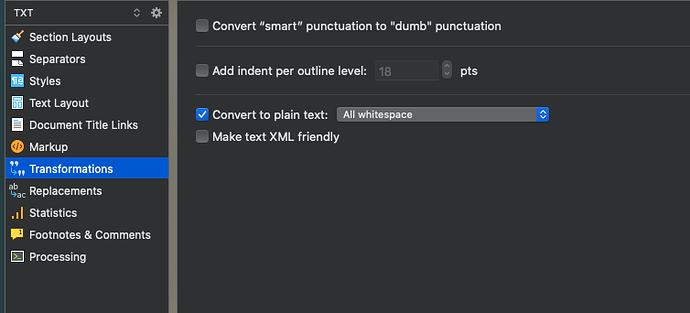Hello:
Referring to my earlier questions, and thanks to Amber’s great advice, I now have a pretty decent workflow that allows me to write Markdown in Scrivener to compile it for Multi Markdown or Word Docx using pandoc and some tricks including the script @AmomentOfMusic sent me here (thanks), or LaTeX. Whichever output is good for the time. This is super to keep a master document that is text and separates formatting from the content as much as possible and relatively easily generate any final file format I need.
I might have additional workflow questions, but for now I’m wondering about line length on plain text documents output by Scrivener compile.
Question: For all of the “plain text” outputs (markdown, LaTeX) it seems useful to me to break the line at 75 characters or something (but only on whitespace so that words didn’t break in the middle). Is this possible? Or have I overlooked something and it’s less useful than I think?
Right now my output breaks at the end of a long paragraph which is slightly complicated to work with. My paragraphs insert an extra beak (blank line) to separate paragraphs. I think this is common with Markdown in most cases.
I assumed this might be a scrivener feature already, but I don’t find how to make it happen.It might also be possible to use a well-known post-compile script to break the lines. I say “well-known” because I don’t want to write such a script myself, and I haven’t gone searching for one. If you can provide pretty straightforward instructions on using that Id be grateful. (I have used all my brain power to get the rest of the workflow going and I’m looking for an easy answer.)
The actual question: Can you help me work this out? How can I get a compiler output that breaks paragraphs into shorter lines with a blank line between paragraphs?
I searched in the forums, but if this is answered there I didn’t use good search terms cause I kept coming to answers for other questions. 
Thanks for your thoughts and hints on accomplishing this!
Cheers,
Steve


